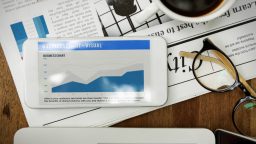In the world of eCommerce, your product pages are the virtual storefronts of your business. They play a critical role in turning website visitors into customers. A well-designed, persuasive product page can make all the difference in conversion rates and ultimately, sales. But what exactly makes a product page high-converting? Let’s break down the essential elements of a product page that not only grabs attention but also encourages customers to make a purchase.
- High-Quality Product Images and Videos
The saying “a picture is worth a thousand words” has never been more true than in eCommerce. The images you use on your product pages are the closest customers will get to physically interacting with your product before purchasing. High-quality visuals are essential in conveying the product’s features, details, and overall appeal.
Include multiple images from different angles and close-ups to showcase the product in its entirety. If possible, offer zoom-in functionality so that customers can get a closer look at the finer details. Videos are an excellent addition too—showing the product in use can help potential buyers visualise themselves with the product, enhancing their buying confidence.
- Clear, Persuasive Product Descriptions
Your product description is an opportunity to highlight the unique features and benefits of what you’re selling. While it’s important to provide essential details—such as size, materials, or technical specifications—what really makes a difference is how you communicate the value your product brings to the customer.
Use clear, concise, and compelling language to convey the benefits. Instead of just listing features, explain how the product solves a problem or improves the customer’s life. For instance, instead of saying “Waterproof jacket,” you could say “Stay dry in any weather with our fully waterproof jacket, designed to keep you comfortable during the stormiest days.” Paint a picture of how the product will enhance their lifestyle or ease their day-to-day tasks.
- Strong, Attention-Grabbing Headlines
The headline of your product page is the first thing customers will see, so it needs to grab their attention immediately. Use the headline to clearly convey what the product is, but make sure it’s also engaging and compelling. A good headline should spark curiosity and make the customer want to read more.
For example, instead of simply stating “Running Shoes,” try something more specific and enticing like, “Run Faster and Longer with Our Lightweight Running Shoes.” A headline like this speaks directly to the benefits and sets the tone for the rest of the page.
- Persuasive Call-to-Actions (CTAs)
The call-to-action (CTA) is a critical element of your product page. It’s the button or link that encourages the visitor to take the next step—whether it’s adding the product to their cart or making a purchase. Your CTA should be visible, enticing, and action-oriented.
Use clear, direct language that prompts customers to take action, such as “Buy Now,” “Add to Cart,” or “Get Yours Today.” Make sure the CTA stands out visually on the page by using contrasting colours or larger fonts. It should be placed in multiple locations on the page, such as after the product description and near the product images, so that customers can easily click it without scrolling.
- Clear Pricing and Shipping Information
Price is one of the biggest factors influencing purchase decisions, so it’s important that the price is clearly visible. Avoid hiding it in fine print or requiring the customer to click through multiple pages to find out how much it costs. Make sure the price is prominent and easy to spot as soon as the customer lands on the page.
In addition to pricing, include any relevant shipping details, such as shipping costs, delivery times, and available options. Customers appreciate transparency, so make sure they know what to expect in terms of total costs before they proceed to checkout. You can also include any special offers, such as free shipping or discounts, to make the deal more enticing.
- Social Proof and Customer Reviews
Social proof—such as customer reviews, ratings, and testimonials—plays a crucial role in building trust and credibility with potential buyers. Before making a purchase, customers want to know that others have had positive experiences with your product. Displaying reviews and ratings can help reassure them that they’re making the right choice.
Encourage customers to leave reviews by making the process easy and offering incentives like discounts or loyalty points. Positive reviews can be displayed alongside the product to highlight the value it brings to other customers. If you have any industry certifications or notable endorsements, showcase them prominently to further build trust.
- Urgency and Scarcity Tactics
Creating a sense of urgency or scarcity can encourage customers to make a purchase sooner rather than later. Adding elements like countdown timers for limited-time offers or showing limited stock availability (“Only 5 left in stock!”) can motivate visitors to take action quickly.
Be careful not to overuse these tactics or make them feel manipulative. They should feel authentic and reflect the true availability of your product. Customers appreciate urgency when it’s genuine, but they can become frustrated if it feels like a sales tactic.
- Easy-to-Find Contact Information
Even with a well-optimised product page, customers may have questions before making a purchase. Make sure your contact information is easy to find. Whether it’s through live chat, a contact form, or a customer service phone number, ensure that potential buyers have a way to reach you quickly if they need assistance.
Having accessible customer support also helps build trust, as customers know they can get help if needed. This is especially important if you’re selling higher-priced or complex products.
- Mobile Optimisation
With more and more customers shopping on mobile devices, ensuring your product pages are mobile-friendly is crucial. A product page that’s hard to navigate or doesn’t load properly on a phone or tablet can turn potential buyers away. Make sure your images, buttons, and text are all optimised for mobile viewing, and that the page loads quickly to prevent frustration.
Test your product pages on various devices to ensure a seamless user experience, whether someone is shopping on a desktop, tablet, or smartphone.
- Easy Navigation and a Clean Layout
A cluttered, confusing product page can overwhelm visitors and drive them away. To ensure a smooth, user-friendly experience, make sure your page has a clean, simple layout. Focus on the key elements—product images, description, pricing, and CTAs—and avoid unnecessary distractions.
Organise the information logically, and use whitespace effectively to break up sections. Ensure that customers can easily navigate through product variants, reviews, shipping information, and related products. A well-structured page allows customers to find what they’re looking for quickly and encourages them to complete their purchase.
Conclusion
Creating a high-converting product page is all about providing a seamless and persuasive shopping experience. By showcasing high-quality visuals, writing compelling descriptions, offering transparent pricing, and using social proof, you can build trust and encourage customers to make a purchase. Don’t forget to incorporate clear CTAs, urgency tactics, and mobile optimisation to enhance the user experience. With these key elements in place, your product page will not only attract visitors but convert them into loyal customers, driving the success of your eCommerce business.





